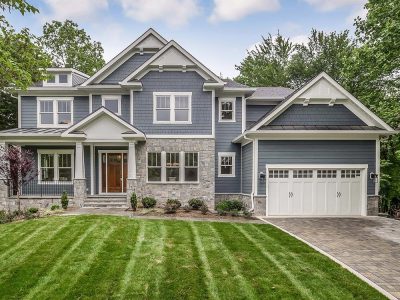Your kitchen is much more than a place to cook; it’s a space that influences your daily habits, your mood, and even your relationships. While kitchen design trends evolve each year, the fitted kitchen remains a favourite across the UK, and for good reason. But what really defines a fitted kitchen in today’s world? And how do you spot one that stands head and shoulders above the rest? Here, we look beyond the usual clichés and uncover what makes a fitted kitchen worth investing in.
What Exactly Is a Fitted Kitchen?
Put simply, a fitted kitchen is a layout where the kitchen cabinets, worktops, and appliances are built in as a cohesive structure. Everything is measured, planned, and installed to fit your space perfectly, rather than relying on freestanding furniture. This design approach ensures no wasted corners, no awkward gaps, and no compromise on storage or style.
Many homeowners think of fitted kitchens as a modern innovation, yet the concept took hold decades ago, when open-plan living started to flourish. Today, fitted kitchens have evolved into sophisticated solutions that feel custom-made for any lifestyle. Whether you prefer clean minimalism or warm rustic character, a fitted layout provides a canvas you can shape around your personal taste.
The process itself has also advanced. Expert designers now combine 3D planning tools with old-fashioned craftsmanship to deliver kitchens that work beautifully in daily life. Professional kitchen companies such as Torben Schmid Kitchens in Cornwall and Colour House Interiors in Surrey have built their reputations on this detailed, professional approach—making sure every unit, hinge, and surface feels considered and robust.
The Benefits You’ll Notice Every Day
A fitted kitchen doesn’t just look seamless; it also offers practical advantages that can transform how you cook, entertain, and relax. Here are some benefits you’ll appreciate long after the installation is complete.
- Clever Use of Every Inch
No matter how compact or unconventional your space might be, a fitted kitchen unlocks hidden potential. Units are designed to work around tricky features—sloping ceilings, alcoves, and pipework—so you’re never left with dead zones that gather dust. - Streamlined Style
A fitted design creates a clean, organised look that feels calm rather than cluttered. From flush cabinet doors to continuous work surfaces, everything connects without jarring gaps or awkward joins. - Easier Cleaning and Maintenance
Freestanding cabinets can create tight spaces where crumbs and grime collect. Fitted kitchens leave no inaccessible gaps behind or underneath units, making cleaning a far simpler task. - Tailored Storage Solutions
You’re not restricted to a handful of standard cupboards. Fitted cabinetry allows you to include pull-out larders, deep drawers, integrated bins, or clever corner mechanisms, all arranged to suit how you cook and store items. - Increased Property Appeal
Potential buyers will often be drawn to the sleek, polished feel of a well-designed fitted kitchen. It suggests care and investment, which can help your home stand out in a competitive market.
What Sets a High-Quality Fitted Kitchen Apart?
It’s easy to assume all fitted kitchens are built to the same standard, but that couldn’t be further from the truth. If you want your new kitchen to serve you well for decades, look beyond brochures and glossy photos. Here’s how to spot quality when you see it:
- Precision Planning
A high-quality fitted kitchen starts with a meticulous survey of your room. True professionals will measure every detail and consider lighting, ventilation, and ergonomics before design begins.
- Cabinet Construction
Look closely at the way units are made. Sturdy cabinets should feel solid, with robust edging and high-grade materials rather than flimsy panels that flex under pressure. Soft-close hinges and runners should feel smooth, not spongy or hesitant.
- Thoughtful Design Details
Excellence hides in the small touches—how corner cabinets operate, how appliances integrate, and how handles sit in your palm. Check that the design allows for sensible workflow, with key zones (cooking, prep, washing) connected logically.
- Consistent Finishes
Poor-quality finishes often chip or peel within a few years. In a well-made fitted kitchen, colours and textures look consistent across panels, edges, and worktops, even in strong light.
- Professional Installation
Even the best components fail if they’re poorly fitted. Choose installers who specialise in kitchens, rather than general trades. They’ll ensure units are level, gaps are minimised, and connections are secure.
German Kitchens: Masters of the Fitted Concept
Across Europe, German kitchen manufacturers have earned a reputation as fitted kitchen specialists. Their approach combines engineering discipline with design flair, creating cabinetry that feels both precise and inviting.
What makes German kitchens so respected isn’t just their clean lines or modern finishes—it’s the attention to hidden details. Cabinet carcasses are usually thicker, hinges are tested to endure thousands of openings, and surfaces resist scratches and stains better than many alternatives. This commitment to quality gives you peace of mind that your investment will last.
While trends come and go, German fitted kitchens maintain their popularity because they balance style, innovation, and durability. If you’re after a kitchen that looks sleek yet stands up to real life, exploring German-made ranges can be a wise place to begin.
How Fitted Kitchens Have Changed Over Time
The traditional view of a fitted kitchen is all matching doors and rigid symmetry. But today’s fitted designs have moved past those limitations. You can mix textures, introduce open shelving, or create contrasting islands to keep your kitchen feeling contemporary rather than uniform.
More homeowners are choosing a “broken-plan” layout, blending fitted cabinetry with freestanding elements like dressers or statement tables. This approach preserves the efficient storage of a fitted kitchen while introducing warmth and personality.
Technology has also become integral. Many fitted kitchens now include smart lighting, integrated charging stations, or appliances you can control remotely. These additions not only improve convenience but also prepare your home for the future
A Fresh Take: Fitted Kitchens as Personal Sanctuaries
One overlooked advantage of a fitted kitchen is the chance to build a space that genuinely reflects who you are. Too often, kitchens are designed to impress guests rather than serve the people who use them every day.
Consider how you live. Do you enjoy cooking elaborate meals, or are you more likely to gather with friends over coffee? Do you prefer everything hidden behind sleek doors, or do you like to keep your favourite cookware in view? A fitted kitchen can be planned to accommodate your habits and quirks in a way flat-pack solutions never could.
In that sense, fitted kitchens have evolved beyond mere practicality. They’ve become a canvas for personal expression—a place to showcase your taste, celebrate your rituals, and create memories that feel authentic.
Choosing the Right Partner for Your Project
Once you’ve decided a fitted kitchen is right for you, the next step is selecting a trusted designer and installer. This decision matters more than any colour or worktop material. A great kitchen company will listen carefully, question thoughtfully, and guide you without pushing you towards unnecessary extras.
If you’re based in the South West, Torben Schmid Kitchens in Cornwall offer a level of tailored expertise that can help you realise your vision without compromise. Further north, Portfolio Kitchens in Manchester have earned respect for their measured, professional approach and clear communication throughout every stage.
Wherever you are, look for a company that takes time to understand your priorities and demonstrates a track record of delivering durable, stylish fitted kitchens.
Final Thoughts
The fitted kitchen remains a defining feature of British homes because it delivers something freestanding furniture cannot: a space shaped entirely around your needs, your habits, and your style.
If you’re planning your next kitchen, consider how a fitted design can help you reclaim unused corners, improve organisation, and create a place that feels both functional and personal. With the right team and thoughtful planning, your new kitchen won’t just be somewhere to prepare meals—it will become a central part of your everyday life, crafted to make each moment more enjoyable.
If you’d like advice tailored to your project, or simply want to explore ideas, take time to speak to a specialist. You deserve a kitchen that feels made for you—and a fitted kitchen is often the most rewarding way to achieve exactly that.








Comments